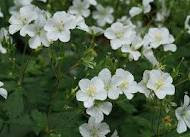The white turtlehead is native to the eastern parts of North America . It lives in watery places such as bogs, on the edges of streams and rivers and in moist woodland. It gets the name turtlehead because the flowers (which resemble snapdragons a little) are rather fancifully believed to look like a tortoise or turtle’s head.
Chelone (the genus name) was one of the nymphs in Greek mythology who dared to cast aspersions on the marriage of Zeus and Hera. For her impertinence she was turned into a tortoise so condemning her to eternal silence. Her name means tortoise in ancient Greek.
The Chelone genus comprises only four species and a few subspecies, and this one is known by different botanical synonyms which include: Chelone montana
 The white turtlehead’s flowers may be white, or tinged with pink or pale yellow, and these are in bloom between July and October. They can grow to heights of two to three feet, with a similar spread. If they are harvested, it is best to do this when they are blooming and dry them for later use, or use fresh.
The white turtlehead’s flowers may be white, or tinged with pink or pale yellow, and these are in bloom between July and October. They can grow to heights of two to three feet, with a similar spread. If they are harvested, it is best to do this when they are blooming and dry them for later use, or use fresh. These turtleheads were formerly in the figwort or Scrophulariaceae family but have recently been moved to the Plantaginaceae family, making them relatives of Speedwell (Veronica officinalis), the snapdragon, French psyllium (Plantago arenaria) and the plantains (Plantago minor and P. ovata) foxgloves, brahmi or water hyssop (Bacopa monnieri), brooklime or water pimpernel, and many others.
Native Americans used these turtleheads in their traditional medicine systems, using the plant as a mild laxative, like senna rather than the drastic purgative, jamalgota. It is considered a bitter herb, like white horehound, and faintly tastes like tea. A decoction of the whole herb (2 ounces of fresh herb to 1 pint of water, with the herb and water mixture being boiled down to half the quantity of liquid) and used as a drink for consumption, gall bladder problems, including gallstones, liver complaints including jaundice, for nausea and vomiting and colic. It was considered an anti-depressant and said to stimulate the appetite, which might make it a good herb to treat anorexia nervosa.
 The plant was used externally in ointment to apply to piles, inflamed breasts, tumours, ulcers and other skin inflammations.
The plant was used externally in ointment to apply to piles, inflamed breasts, tumours, ulcers and other skin inflammations. The Baltimore Checker spot butterfly uses this plant to lay its eggs on, so it is an important conservation plant.
Despite it being used traditionally for centuries very little research has been done into verifying or contradicting its value in medicine as yet.
















































